Key Takeaways:
- Feasibility: Yes, it is possible to train a cat to use the toilet, but it requires patience and a consistent training regimen.
- Benefits: Toilet training can reduce the need for litter boxes and can be more hygienic for both the cat and the home environment.
- Considerations: Not all cats will adapt to toilet training, and there are health and safety concerns to consider.
Cats are known for their independence and quirky behaviors, but can these furry feline friends be taught to swap the litter box for the toilet? It sounds like a punchline to a joke, but with the right approach, patience, and understanding of cat behavior, toilet training your cat is not only possible but also quite achievable. Let's dive into the nitty-gritty of turning your cat into a toilet-using sophisticate.
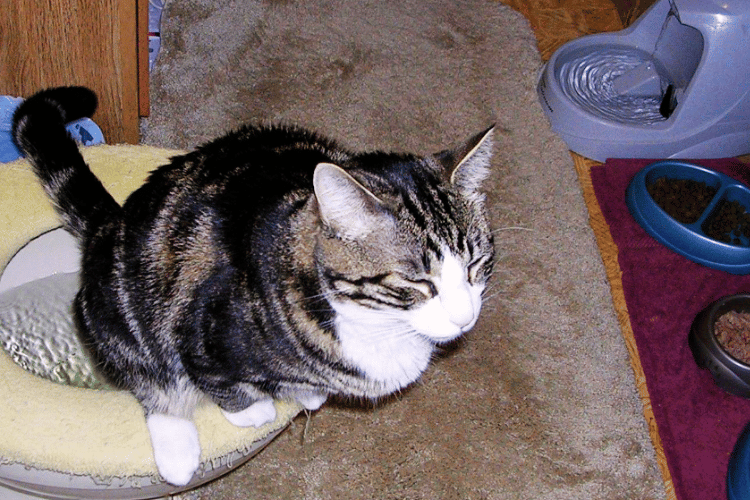
Understanding the Basics of Cat Toilet Training
Before you even lift the toilet seat, it’s crucial to understand what toilet training involves. Toilet training your cat means teaching them to use the actual toilet for their business instead of the traditional litter box. This process requires a special training seat that gradually transitions from a litter-filled box to a ring that fits over the toilet bowl, allowing waste to drop directly into the water.
The training process is not overnight magic. It involves a series of gradual and consistent steps that help the cat adapt to the new system without stress. Patience is key, as some cats might take to the idea quickly, while others may need more time to adjust.
Choosing the Right Equipment
To start, you’ll need a cat toilet training kit. These kits usually include a series of rings or trays that fit over the toilet seat, with spaces to gradually reduce the amount of litter and increase the size of the opening until the cat is comfortable sitting on the toilet.
It’s important to choose a kit that is sturdy and fits well on your toilet to avoid any accidents or the kit slipping off, which could scare your cat and set back the training process. Ensuring the toilet seat is always down will prevent your cat from falling into the toilet water, which could discourage them from continuing with the training.
Step-by-Step Training Guide
Starting Slow
Begin by placing the training seat on the floor near your cat’s current litter box. Allow your cat to explore this new object and use it as their litter box. Gradually move it closer to the bathroom over a series of days, ensuring your cat follows along and is comfortable at each stage.
Once the training seat and your cat are in the bathroom, place the seat on the toilet with a small amount of litter. This helps the cat make the connection between the toilet and their bathroom habits. It’s crucial during this stage to keep the bathroom door open and ensure the environment is as calm and quiet as possible.
Reducing the Litter
As your cat gets accustomed to jumping on the toilet and using the training seat, start reducing the amount of litter in the pan. This step gets them used to the idea of not digging and covering their waste as they would in a litter box.
Continue reducing the litter gradually until there is none left, and the cat is sitting directly on the training seat with an open hole that allows the waste to go into the toilet. Always praise your cat and offer treats for using the toilet to reinforce the behavior.
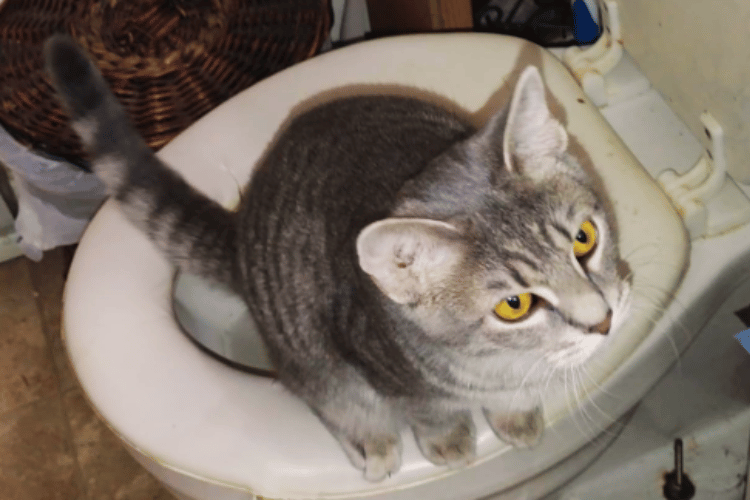
Pros and Cons of Toilet Training
Advantages
Toilet training can be a cleaner and more economical option over time. It eliminates the need for buying litter and dealing with the dusty mess that comes with it. For those in small apartments, it also frees up space that would otherwise be taken by a litter box.
The Comedic Chronicles of Cat Toilet Training
The Great Throne Adventure
Imagine your cat, the majestic furball, embarking on the noble quest of toilet training. Most cats are not just creatures of habit; they're the monarchs of routine! Introducing them to the concept of using a human toilet can be akin to teaching them a circus trick. Initially, your kitty might be skeptical, wondering why their perfectly good cat litter box has been swapped for this shiny porcelain water bowl. But with patience and a sprinkle of humor, you might just witness your cat's natural instincts kicking in, as they balance on the brink of the toilet seat, pondering the mysteries of flushable litter.
The Tail of Trial and Error
As any seasoned cat owner will tell you, the toilet training process is not without its share of comedic errors. Picture this: your cat finally decides to embrace the toilet, but not before trying every other spot in the house, including that expensive rug and the cold bathroom floor. Training cats to shift from kitty litter to a toilet is a journey filled with trial and error. It's essential to keep a sense of humor as you might find your cat's waste in unexpected places during the learning phase. Remember, every misstep is just a step closer to a litter-free home!
The Purr-suit of a Cleaner Litter Box
When embarking on the noble quest of toilet training cats, one might wonder about the fate of the traditional cat's litter box. Imagine a world where you no longer have to scoop up your cat's waste daily. The first step in this hygienic revolution involves gradually introducing your feline to the concept of using the toilet. This transition not only promises a cleaner home but also aligns with a cat's natural instincts to cover their waste. By reducing the use of biodegradable litter, cat owners can enjoy a less odorous and more space-efficient home.
However, transitioning from a litter box to a toilet is not just about convenience; it's about understanding your cat's health and comfort levels. Cats are creatures of habit, and any significant change, such as switching from a litter box to a toilet, needs to be managed carefully to avoid stress or anxiety. Ensuring that the training box is stable and secure can make the toilet seem less daunting to a hesitant kitty. Remember, the goal is to make your cat feel as comfortable as possible during this transition, keeping their well-being as a top priority.
The Litter-ary Genius: Cats and Their Innate Bathroom Habits
When it comes to understanding a cat's natural instincts, their litter box habits are like reading an open book—if that book were written in, well, cat feces. Cats are naturally inclined to cover their waste, a behavior that helps keep predators from sniffing them out in the wild. This instinct makes them prime candidates for toilet training, as they already seek to manage their waste in such a way that it's hidden. However, transitioning from litter box to toilet can be like switching from paperback to e-reader: convenient but requiring a bit of tech-savvy.
Now, while cats are not about to start flushing after each visit, toilet trained cats do offer a cleaner and less litter-intensive lifestyle for their owners. But here's the scoop: not all cats will take to this change like a cat to a sunny windowsill. The process requires patience and a keen eye for observing your cat's comfort and health. It's a blend of respecting their instincts and gently nudging them towards new habits, ensuring their toilet tales are successful rather than stressful.
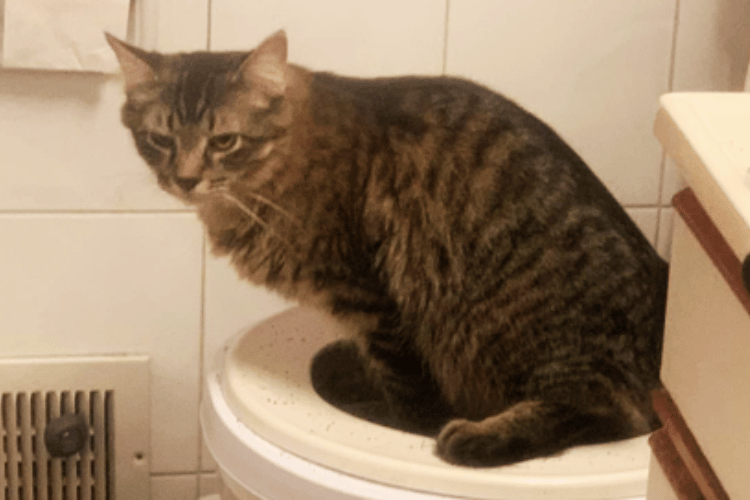
The Loo Chronicles: A Tail of Cat's Natural Instincts
When it comes to understanding a cat's natural instincts, their bathroom habits are a purr-fect example. Cats are born with an innate desire to cover their waste, which helps in masking their scent from predators and other cats. This instinct makes them relatively easier to potty train compared to, say, training a dog to fetch your slippers. However, when transitioning from a cat's litter box to a human toilet, you're essentially asking them to ignore thousands of years of evolutionary programming. It's like convincing a dog that the mailman is actually a good guy!
Moreover, leveraging these instincts can be beneficial in toilet training. By placing the cat's litter box near the toilet and gradually raising it to the height of the toilet seat, you're mimicking the elevation cats often prefer for their waste disposal. This method taps into their instinct to find a high spot for pee and poop, which might make them more amenable to the idea. Just imagine a cat perched majestically on the throne—it's not just funny, it's a testament to how well they can adapt their natural behaviors to suit our human needs!
The Royal Flush: Reigning the Throne with Feline Grace
When it comes to mastering the art of the royal flush, our feline friends can be both regal and ridiculous. Imagine your cat, the sovereign of the sofa, deciding to take on the porcelain throne! Training cats to swap the cat's litter box for the toilet can seem like a coup in your household. It starts with observing your cat's natural instincts. Cats are clean creatures by nature, and the allure of a spot where cat's waste magically disappears can be appealing to their royal highnesses.
However, the path to the throne is not always lined with roses (or catnip, in this case). The initial fascination might wear off, leading to some regal resistance. Picture your cat perched on the toilet, contemplating the mechanics of flushing away their own cat's poop. It's a mix of curiosity and caution, as if they're pondering over whether this newfangled contraption is a throne or a trap. This transition phase is crucial and requires patience, lest the royal subject decides to abdicate the throne for the familiar comfort of the litter box.
The Scoop on Poop: Decoding Cat's Litter Box Behaviors
Ever wondered what goes on in the mind of your feline friend as they meticulously cover their tracks in the litter box? Cats are creatures of habit, and their natural instincts drive them to hide their waste to avoid attracting predators. When you train cats to use the toilet, you might notice a shift in these behaviors. Initially, they might be puzzled, wondering where the satisfying feeling of digging and covering has gone. Observing your cat's adaptation can be both amusing and enlightening as they try to paw at the smooth, unyielding surface of your porcelain throne.
Transitioning from the litter box to the toilet can lead to some hilarious scenarios. Picture this: your cat, perched majestically on the toilet seat, gives you a look of utter betrayal as it tries to figure out the physics of water. During the early stages of toilet training, don't be surprised if you find your cat's poop in unexpected places as they express their 'artistic displeasure'. It's a learning curve for both of you, filled with trial, error, and a good dose of laughter. Keep an eye on your cat's health and weight during this period to ensure they're adjusting well without stress.
The Throne Diaries: A Cat's Quest for Porcelain Perfection
Ever wondered what goes through your cat's mind when it first encounters the shiny, water-filled throne? Well, imagine the surprise and curiosity as they ponder why their human would ever choose such a bizarre cat's litter box. In their quest for porcelain perfection, cats might initially be baffled. Picture your furry friend circling the toilet, tail high, eyes wide, as if trying to solve the greatest mystery since the red laser dot. This initial exploration is crucial, tapping into the cat's natural instincts to investigate and conquer new territories, even if it's just the bathroom.
As the training progresses, don't be surprised if your cat becomes a bit of a bathroom hog. Once they've mastered the art of toilet use, they might just pride themselves on their newfound skill. Imagine your cat casually mentioning in their diary, "Day 45: The humans still think they trained me. Little do they know, I trained them to admire my majestic bathroom habits." This humorous anthropomorphism not only adds a funny twist but highlights the adaptability and intelligence of our feline friends as they turn a human space into their own personal litter-less kingdom.
The Litter Box Limbo: Cat's Dance Between Natural Instincts and Trained Habits
When it comes to understanding a cat's natural instincts, the litter box is like the dance floor at a disco—full of unexpected moves and surprises. Cats are inherently clean animals, and their instinct to bury their waste is not just a quirky behavior but a survival tactic to hide their scent from predators. However, when you introduce the concept of toilet training, it's like asking them to swap their salsa for ballet. Some cats might leap gracefully onto the new stage, while others might step on a few toes along the way.
The transition from cat's litter box to toilet can be a spectacle. Imagine your feline, who has spent its entire life mastering the art of discreetly burying its waste, now has to balance on the brim of a porcelain bowl. The process requires patience and a good sense of humor as you might find more cat's poop beside the toilet than inside it initially. Each cat's journey is unique, and while some may never fully embrace the change, others might surprise you by taking to it like a cat to a warm lap.
The Weighty Whiskers: Monitoring Your Cat's Health Through Toilet Habits
Monitoring a cat's weight and health can often be as tricky as solving a Rubik's cube with your feet. However, the shift from litter box to toilet provides a new perspective on your cat's health, particularly through observing changes in your cat's waste. When cats use a litter box, it's easier to notice variations in weight, as you might feel the heft of the waste while cleaning. Transitioning to toilet training might require a bit more detective work to keep track of these changes.
Keeping an eye on your cat's poop during and after the transition to toilet training is crucial. Changes in consistency, color, or frequency can be early indicators of health issues. Without the usual digging through litter, you might need to become a bit of a bathroom sleuth—peering into the porcelain throne to ensure your cat's health isn't going down the drain. This new routine can help you catch potential health problems early, ensuring that your furry friend remains healthy and happy.
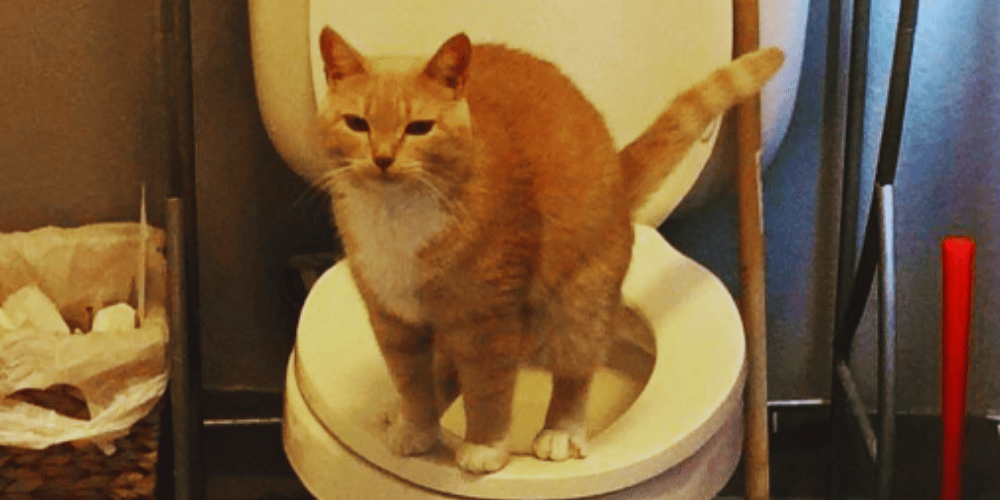
Paws and Reflect: The Philosophical Side of Cat Toilet Training
When a cat is taught to use the toilet, it's not just about ditching the litter box; it's a deep, philosophical journey for the feline mind. Consider the existential crisis your cat might face: "To poop in water or not to poop in water, that is the question." This Shakespearean dilemma can lead to some humorous reflections from your cat's perspective. They might ponder the meaning of their existence if they are not digging and covering their waste as nature intended. This shift from litter box to toilet can spark a whole new set of behaviors as they adjust to their evolving bathroom etiquette.
On the flip side, this training can also lead to a heightened sense of pride and accomplishment in your cat. As they balance on the brink of the bowl, they're not just aiming to relieve themselves; they're performing a delicate ballet, showcasing their incredible balance and precision. It's a moment of triumph that might warrant a philosophical paw-sing from your cat to reflect on their journey from litter box novice to toilet connoisseur. This humorous take not only makes the training process enjoyable but also helps cat owners appreciate the complex inner world of their feline companions as they adapt to this unnatural yet amusing task.
Whiskers on the Weigh-In: Tracking Cat's Health Through Toilet Habits
When you embark on the journey to train your cat to use the human loo, monitoring your cat's weight and health becomes a part of the daily routine. This new setup allows you to become a detective in your own bathroom. You'll start noticing changes in your cat's waste that could indicate health issues. For instance, changes in the consistency, color, or frequency of your cat's poop can be early indicators of health problems. It's like having a health report delivered right to your bathroom!
However, the transition can also be filled with comedic gold. Imagine your cat, who has just mastered the art of balancing on the toilet seat, suddenly realizing mid-business that this isn't their usual sandbox. The look of confusion followed by a hasty retreat can be quite the spectacle. Keep a close eye on these moments, as they not only provide a good chuckle but also ensure that your cat's weight and health are not adversely affected by the stress of learning something so against their natural instincts. In the grand scheme of things, a well-monitored toilet training process can lead to a happier, healthier pet.
Whisker Weight Watchers: Monitoring Your Cat's Health on the Throne
Training your cat to use the toilet isn't just about convenience or avoiding the mess associated with traditional cat's litter box; it's also about keeping a close eye on your cat's health. Monitoring your cat's waste can tell you a lot about their well-being. When cat's poop and cat's weight are consistent, it's a good sign that your furry friend is in good health. The shift from litter box to toilet might make it trickier to keep tabs on these important health indicators.
On the flip side, imagine trying to convince your cat that the toilet is actually a high-tech scale and health monitoring station. "Step right up, Fluffy, let's check that waistline!" While cats might not be thrilled with the idea of weight checks during their bathroom breaks, the transition provides a unique challenge for pet owners. Ensuring your cat's weight remains stable and that their waste looks healthy becomes a part of your daily detective work. It's like being a spy in your own bathroom, decoding clues from your cat's toilet trips to ensure they remain the picture of health.
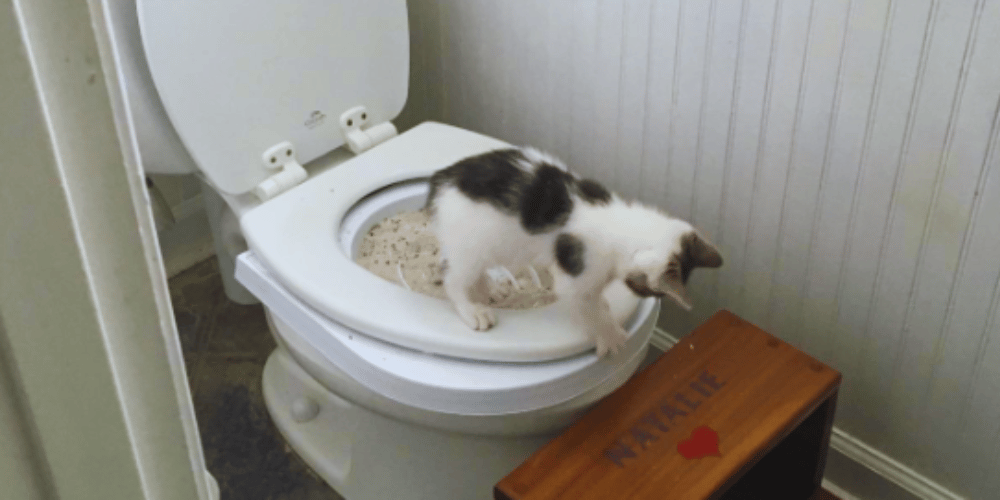
Feline Follies: The Unexpected Consequences of Toilet Training
Toilet training a cat isn't just about the laughs and the occasional photo of your kitten looking confused on a toilet seat. It has real implications for a cat's health and the surrounding area. For instance, without regular monitoring of a cat's waste, owners might miss signs of health issues such as a urinary tract infection or changes in the cat's weight. Normally, a quick scoop of the litter box can tell you if something's amiss, but with toilet training, these signs can literally be flushed away.
Additionally, for pregnant women, handling a cat's litter box is advised against due to the risk of toxoplasma gondii, a parasite that can cause serious health issues. By training cats to use the toilet, you might unwittingly put yourself in closer contact with cat's poop during the training phase, increasing health risks. It's a comedic scene to imagine—chasing after a cat to ensure it's using the toilet properly, but it's also a dance with potential danger. Always consult with a professional in veterinary medicine to ensure you're not compromising your pet's health or your own.
Fur-tunate Mishaps: When Potty Training Goes Purr-ly
Imagine this: you've just celebrated your cat's first successful toilet use with a treat and a little dance of joy. But then, the next morning, you find a surprise in your shower—oops! Potty training cats can lead to some humorous, if not slightly inconvenient, mishaps. Cats might understand the concept of using the toilet, but the actual logistics—like balancing on the rim—can lead to some comical errors. These moments, while frustrating, are also opportunities for bonding and learning, as each misstep teaches you more about your furry friend's preferences and needs.
And let's not forget the other animals in the house. Dogs might find the whole scenario bewildering as their feline housemates elevate their bathroom game. Kittens, curious as ever, might see the toilet as a new playground rather than a bathroom, leading to tales that will have you laughing for days. While these anecdotes provide entertainment, they also highlight the importance of close supervision and gradual training. Each cat's journey to becoming toilet trained is unique and filled with potential for light-hearted memories amidst the challenges.
Comedy in the Commode: Hilarious Hiccups in Toilet Training
Toilet training a cat can lead to some humorous scenarios that lighten the mood of any frustrated cat owner. Picture this: your cat finally jumps onto the toilet, poised and ready, only to be spooked by the sudden sound of the flush. Next thing you know, there's a cat-shaped blur sprinting out of the bathroom! These moments, while frustrating, are also part of the journey and learning experience for both the cat and the owner. It's important to keep a sense of humor through the ups and downs of potty training.
On another note, imagine the surprise of guests when they use your bathroom only to find your cat casually perched on the toilet! These amusing incidents can serve as great ice-breakers and show how pets can bring unexpected joy and laughter into our lives. While the process of training cats to use the toilet is filled with trial and error, the end result can lead to comedic gold. Just think of the stories you'll have to share about your cat's bathroom antics, making the whole host of challenges well worth it.
Feline Faux Pas and Funny Flubs
Potty Humor in the Purr-fect Setting
When you start the journey to toilet train your cat, be prepared for moments that will have you both laughing and groaning. Imagine walking into the bathroom to find your cat has misjudged their jump, and instead of landing on the toilet seat, they've managed to scatter cat litter all over your pristine bathroom floor. These moments, while frustrating, are also endearing reminders of your cat's individuality and the unique challenges of moving away from the traditional litter box. Each attempt, successful or not, is a step towards reducing the amount of kitty litter used and making your home cleaner and more spacious.
Comedy of Errors: The Litter-less Chronicles
As your cat ages, their agility may not be what it once was, and the toilet training process can lead to some humorous sights. Picture an older cat, dignified and wise, trying to adapt to the newfangled idea of a toilet instead of their usual litter box. There might be moments when they completely forget the goal, leaving you to find someplace where they've decided the new potty area should be. These are the stories you'll share at dinner parties, laughing over how your pet tried to outsmart the new system, only to return to their old habits in the most comical ways.
Disadvantages
However, there are downsides. Monitoring your cat’s health through their waste becomes more challenging, as you won’t see their stool or urine as easily. Some vets argue that the natural squatting and digging behavior is important for a cat’s mental health, and by toilet training, you might be taking away an essential part of their instinctual activities.
Health Considerations
Watching for Signs of Distress
If at any point your cat shows signs of stress or reluctance to use the toilet, it might be necessary to revert to the litter box. Stress can lead to health problems such as urinary tract infections or bladder inflammation, especially if a cat holds in their waste to avoid using the toilet.
Safety First
Always ensure the toilet lid is left up and the seat is secure to prevent any accidents. Cats are agile, but they’re not infallible, and a slip could lead to injuries or a negative association with the toilet.
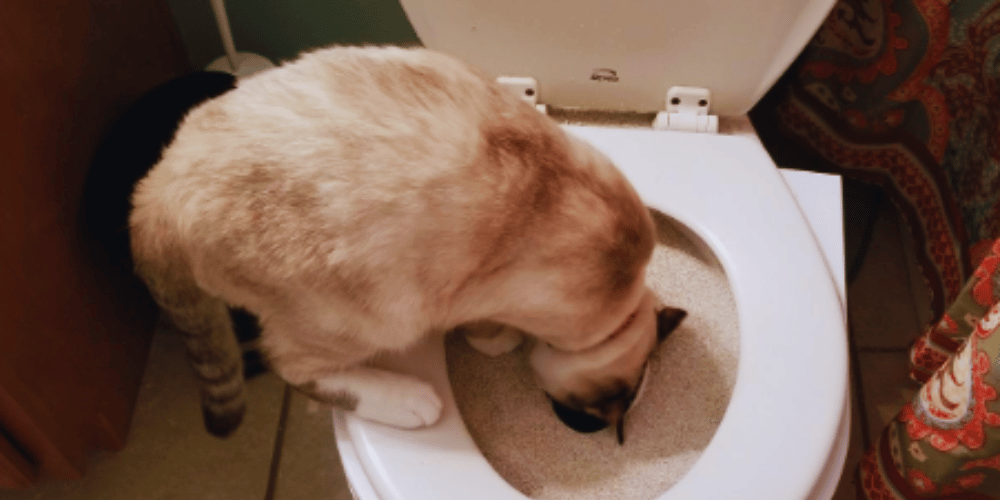
Summary
Training a cat to use the toilet is a feasible endeavor that can lead to a cleaner home and a novel party trick. However, it’s not suitable for all cats or all owners. It requires a significant investment of time and patience, and there are potential health and safety issues to consider. Before embarking on this journey, weigh the pros and cons and consider your cat’s personality and adaptability.
FAQ
Q1: How long does it typically take to toilet train a cat?
A1: The duration varies widely depending on the cat. Some might learn in a few weeks, while others could take several months.
Q2: Are there any specific breeds of cats that are easier to train?
A2: No specific breed is necessarily easier to train, but younger cats and those already accustomed to following commands might adapt quicker.
Q3: Can toilet training affect a cat’s health?
A3: Yes, it can. It’s important to monitor your cat closely during the training process for any signs of stress or discomfort, which could lead to health issues.
Thank you for visiting LegitLists we hope this helps you make a legitimate choice!






